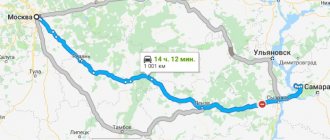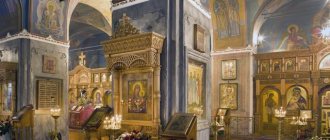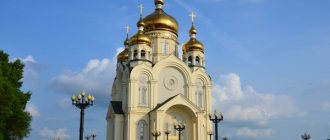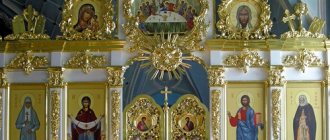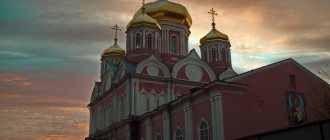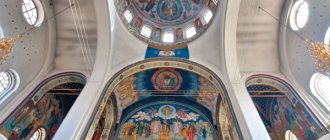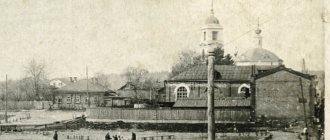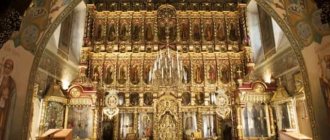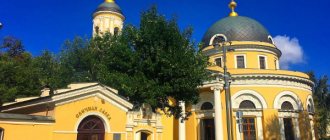Mir
Russia Orenburg region Orenburg Cathedral of St. Nicholas the Wonderworker (Orenburg) Map is loading…
{"format":"leaflet","minzoom":false,"maxzoom":false,"limit":50,"offset":0,"link":"all","sort":[""], "order":[],"headers":"show","mainlabel":"","intro":"","outro":"","searchlabel":"\u2026 \u0441\u043b\u0435\ u0434\u0443\u044e\u0449\u0438\u0435 \u0440\u0435\u0437\u0443\u043b\u044c\u0442\u0430\u0442\u044b","default":"","import-annotation":false,"width ":"auto","height":"350px","centre":{"text":"","title":"""link":"""lat":51.7663060000000001537046045996248722076416015625,"lon": 55.12129399999999890269464231096208095550537109375,"icon":""},"title":"","label":"","icon":"","lines":[],"polygons":[],"circles":[ ],"rectangles":[],"copycoords":false,"static":false,"zoom":8,"defzoom":14,"layers":["OpenStreetMap"],"image layers":[] ,"overlays":[],"resizable":false,"fullscreen":true,"scrollwheelzoom":true,"cluster":false,"clustermaxzoom":9,"clusterzoomonclick":true,"clustermaxradius":80, "clusterspiderfy":true,"geojson":"","clicktarget":"","showtitle":true,"hidenamespace":false,"template":"","userparam":"","activeicon": "","pagelabel":false,"ajaxcoordproperty":"","ajaxquery":"","locations":[{"text":"\u003Cb\u003E\u003Ca href=\"/palomnik/%D0% A1%D0%BE%D0%B1%D0%BE%D1%80_%D0%9D%D0%B8%D0%BA%D0%BE%D0%BB%D0%B0%D1%8F_%D0%A7% D1%83%D0%B4%D0%BE%D1%82%D0%B2%D0%BE%D1%80%D1%86%D0%B0_(%D0%9E%D1%80%D0%B5%D0 %BD%D0%B1%D1%83%D1%80%D0%B3)\» title=\»\u0421\u043e\u0431\u043e\u0440 \u041d\u0438\u043a\u043e\u043b\u0430\u044f \ u0427\u0443\u0434\u043e\u0442\u0432\u043e\u0440\u0446\u0430 (\u041e\u0440\u0435\u043d\u0431\u0443\u0440\u0433)\»\u003E\u0421\ u043e\u0431\u043e\ u0440 \u041d\u0438\u043a\u043e\u043b\u0430\u044f \u0427\u0443\u0434\u043e\u0442\u0432\u043e\u0440\u0446\u0430 (\u041e\u0440\u 0435\u043d\u0431\u0443\u0440 \u0433)\u003C/a\u003E\u003C/b\u003E\u003Chr /\u003E\u003Ca href=\»/palomnik/%D0%A1%D0%B2%D0%BE%D0%B9%D1%81% D1%82%D0%B2%D0%BE:%D0%90%D0%BD%D0%BD%D0%BE%D1%82%D0%B0%D1%86%D0%B8%D1%8F\" title=\»\u0421\u0432\u043e\u0439\u0441\u0442\u0432\u043e:\u0410\u043d\u043d\u043e\u0442\u0430\u0446\u0438\u044f\»\u003E\u0410\u0 43d\u043d\ u043e\u0442\u0430\u0446\u0438\u044f\u003C/a\u003E: »'\u0421\u043e\u0431\u043e\u0440 \u041d\u0438\u043a\u043e\u043b\u0430\u04 4f\u0427\u0443\u0434 '' 9\u0441\u043e\u0431\u043e , \u043e\u0434\u0438\u043d\ u0438\u0437 \u043d\u0430\u0438\u0431\u043e\u043b\u0435\u0435 \u043f\u043e\u0441\u0435\u0449\u0430\u0435\u043c\u044b\u0445 \u 0445\u0440\u0430\u043c\u043e\ u0432\u041e\u0440\u0435\u043d\u0431\u0443\u0440\u0433\u0430,\u043d\u0430\u0445\u043e\u0434\u044f\u0449\u0438\u0439\u0441\u 044f\u0432\u0446\u0435\u043d \u0442\u0440\u0435 \u0433\u043e\u0440\u043e\u0434\u0430 \u043d\u0430 \u0443\u043b\u0438\u0446\u0435 \u0427\u043a\u0430\u043 b\u043e\u0432\u0430. \u0417\u0434\u0435\u0441\u044c \u0445\u0440\u0430\u043d\u0438\u0442\u0441\u044f \u0422\u0430\u0431\u044b\u043d\u0441\u043a\ u0430\u044f\u0438\u043a\u043e \u043d\u0430 \u0411\u043e\u0436\u0438\u0435\u0439 \u041c\u0430\u0442\u0435\u0440\u0438.","title":"\u0421\u043e\u0431\u043e\u0440 \u041d\u0438 \u043a\u043e\u043b\u0430\u044f \u0427\u0443\u0434\u043e\u0442\u0432\u043e\u0440\u0446\u0430 (\u041e\u0440\u0435\u043d\u0431\ u0443\u0440\u0433)", "link":"","lat":51.7663060000000001537046045996248722076416015625,"lon":55.12129399999999890269464231096208095550537109375,"icon":""} ],"imageLayers":[]}
51.766365; 55.121057
Russia, Orenburg, Chkalova street, 8
Orenburg, Orenburg region 460024
Russia
Telephone
: (3532) 31-95-88
Cathedral of St. Nicholas the Wonderworker
- Cathedral of the Orenburg Diocese, one of the most visited churches in Orenburg, located in the city center on Chkalova Street. The Tabyn Icon of the Mother of God is kept here.
History[edit]
St. Nicholas Church was founded in 1883.
On May 4 (17 New Style), 1886, the cathedral was consecrated by His Grace Veniamin II (Smirnov), Bishop of Orenburg and Ural.
The reason for the foundation of the brick building of the temple was the fire of the wooden buildings of the Cossack village with its fort (fortress, hence the name of the region “Forstadt”). It was during this difficult time that the idea of construction arose. The initiative belonged to the Cossacks of the Orenburg village, led by the trustee and contractor E.G. Kolokoltsev. Planned by engineer-captain V.P. Sakharov. (Diocesan Gazette No. 10 for 1886, p. 375; Architectural and historical information - architect Yu.A. Grigoriev).
The church was founded in 1883 at the expense of parishioners (tithe) and consecrated on May 4, 1886 by His Grace Veniamin II (Smirnov), Bishop of Orenburg and Ural. At first it was single-throne, in the name of St. Nicholas the Wonderworker, and since 1910 it has been listed as three-throne in honor of the Dormition of the Mother of God and St. Great Martyr Panteleimon. (Architectural and historical information - architect Yu.A. Grigoriev).
The names of the servants of this temple and the rector of the first builder, Fr. Vasily (Koblova), who died in 1917 and was buried behind the altar of the temple along with the builder and elder Evfimy Kolokoltsev.
In the 30s, during the hard times of the destruction of churches and the persecution of the church, a special Providence appeared for the St. Nicholas Church, a sign of God’s miraculous mercy. Of the 40 churches in Orenburg, it was the only one that was not destroyed, which was confirmed by the stories of Elizaveta Levashova (nun Evnikia the deaf) and Alexandra Kukhterina, parishioners of the St. Nicholas Church. (St. Nicholas Cathedral: history and modernity p. 2, N.A. Myachina):
“At the Church of St. Nicholas, a pious couple lived in a guardhouse and guarded the temple. One day, after the evening service, the temple was already closed. Suddenly they hear a noise in the temple. Let's go have a look. They opened the large door of the St. Nicholas chapel and froze: the Mother of God, standing on Calvary at the Cross, came down from her place and prayed before the crucifixion of Her Son. This went on for several minutes. As if in a light fog, the Mother of God rose and took her place. The bishop was informed about this vision. At that time, Bishop Arseny was at the Orenburg See. A prayer service was served before Golgotha. After the prayer service, the bishop, addressing the believers, uttered prophetic words: “This temple will not be destroyed.”
Bishop Arseny (Voskresensky), who was arrested twice in the 1930s, died in exile during the third arrest. During his last arrest, when he was being taken out of the St. Nicholas Church, he prophetically said to the crying people: “This temple will be a cathedral”! (St. Nicholas Cathedral: history and modernity, p. 3, N.A. Myachina).
In 1936, St. Nicholas Church was closed, and all shrines were removed from it. The temple building was used for various mundane household needs. At first, it housed a dormitory, and after 1942, the archives of the People's Commissariat of Internal Affairs evacuated from Moscow and Leningrad (Architectural and historical information, architect Yu.A. Grigoriev).
Time passed, and the prediction of Bishop Arseny (Voskresensky) actually came true that St. Nicholas Church would become a cathedral, since by that time the majestic Kazan Cathedral had already been blown up, and out of 40 churches in Orenburg, only this parish church remained.
On April 12, 1944, the temple was reopened.
From 1955 to 1958, the temple was re-painted by the talented local artist Vladimir Rublev.
In 1968, the fourth boundary was consecrated in honor of All Saints.
Since the 1000th anniversary of the Baptism of Rus' (1988), a favorable time has come for the Orthodox Church; large construction began in St. Nicholas Cathedral with the blessing of Metropolitan Leonty.
1988-1990 - a new dome was built instead of the old wooden one, which gave a tilt.
1991 - construction of a new chapel of All Saints began.
1992 - the chapel was consecrated.
1991 - gilding of the cross and the bulb of the new dome was carried out.
1992 - restoration work was carried out in the temple, the wooden window sills were replaced with marble ones, new wooden frames were installed and metal bars were installed on all windows, the linoleum was changed, and a new pulpit was installed.
Next in line was the bell tower, which turned out to be disproportionately small after the reconstruction.
In 1994, with the help of local builders led by Vyacheslav Mikhailovich Konovalov, according to the project of N.A. Bykovskaya, on the first tier of the old bell tower a new high bell tower was built, rising 7 meters and harmoniously blending into the surrounding buildings.
1993 – garages and cellars were built. 1995 - a water-sanctuary chapel was erected on the eastern side of the temple grounds.
1994-1995 – gilding of all 3 iconostases was carried out, the dome was painted and three altars were painted, the wall paintings of the altars and the entire temple were restored. New chandeliers were purchased in a quantity of 5 pieces.
1995 – the area around the cathedral was landscaped, a garden was laid out, a cast-iron fence was installed, and larches were planted.
1997-1998 - a church administrative building was built, housing a refectory, a diocesan printing house, a Sunday school, an accounting department, a library, a hotel for proteges and for clergy.
In 2007, a new baptismal church was put into operation.
In 2009, a new church shop was built on the territory of the cathedral.
A Sunday school has been operating since 1999.
About the city
The city of Orenburg (1938-1957 - Chkalov) is located in the southern part of the Urals, 1475 kilometers from the capital of the Russian Federation, on the Ural River.
According to one version, it is named after the Or River.
Orenburg is a major cultural, educational, industrial and transport center of the region and the country. The population is 564.5 thousand people.
Leading industries: gas production, gas processing, mechanical engineering, metalworking, chemical, food and light.
The city has a huge number of universities, cultural institutions (theaters, centers, galleries), and churches.
One of the most famous and visited is St. Nicholas Cathedral (Orenburg).
Soviet time
With the coming to power of the Bolsheviks and the beginning of the persecution of churches and believers, this temple was the only one in Orenburg that was not destroyed. Of the forty churches and cathedrals in the city, only he managed to preserve his building, despite the fact that the temple was closed in 1936. All church relics and shrines were taken out of the temple. The bishop of the temple, Arseny, who was subject to constant arrests by the authorities, predicted that the temple would become a cathedral. Since 1936, there was a dormitory in the temple building, and with the beginning of the Great Patriotic War, the building was adapted for archives of NKVD documents that were evacuated from Moscow and Leningrad. Towards the end of the war in April 1944, the temple was opened again, and since 1955 the interior was painted by the artist V. Rublev. In 1959, a new iconostasis was consecrated in the church. In 1968, the new fourth boundary of All Saints was consecrated. Gradually, the temple building was restored and completed, and the area around it was landscaped. In 1988, a new dome was built to replace the outdated wooden one.
Photo by 1976: E. Shevchenko
Description
The Church of St. Nicholas the Wonderworker is considered the main shrine of the region. Located in the heart of the city.
This is a beautiful area on which a beautiful cathedral building and 2 chapels are built. There is also a church shop where you can buy candles, books, icons and other church supplies. And also collect sacred water in the catchment chapel.
The interior decoration of the central temple is very picturesque, has a beautiful altar and majestic icons, some of which are ancient.
The main ones are the icons of the Tabyn Mother of God and the Holy Matrona of Moscow (with a particle of her relics).
The atmosphere of St. Nicholas Cathedral in Orenburg is peaceful, bright, clean, and inspired. Services, solemn prayers, baptisms, communions, and weddings are regularly held here. And the majestic ringing of bells simply makes your heart skip a beat in joyful jubilation.
The temple has its own interesting history of foundation and further existence.
Icons in St. Nicholas Cathedral in Orenburg
There are currently quite a lot of shrines in the temple. One of the most revered is the icon of St. Matrona, which was brought to the monastery in April 2013 (along with the relics) from the capital. It was written in the Intercession Convent in Moscow, especially for this temple.
And now it is constantly located in the right limit (St. Panteleimon) and is available to parishioners during the times when the church is open.
Also in the Cathedral there is a sample of the ancient Icon of Our Lady of Tabynsk, which is most popular in Orthodox churches in Orenburg, Bashkiria, the Volga region, Kazakhstan, and Siberia.
The initial history of the appearance of this shrine is very unusual. This happened in the 1570s. in Bashkortostan - on the salty estuary near the Voznesenskaya Hermitage. She was placed in a temple in the city of Ufa, which burned down in 1593. But the icon appeared again on the salty estuary.
In 1597 it was placed in the Prechistensky Monastery, in 1692 - in the Salt Town, and in 1741 - in the fortress of the village of Tabynskoye, in Bashkiria. That’s how they began to call it – the Tabyn Icon of the Mother of God.
In the 20th century, one of the parishioners - a needy woman - exchanged the shrine, which was kept in her attic, for means of subsistence. As it turned out later, the Tabyn Icon helped many to be healed of their illnesses. And currently it is kept in the Cathedral.
Schedule of Divine Services
St. Nicholas Cathedral (Orenburg) holds daily morning and evening services.
Schedule:
- From Monday to Friday - Divine Liturgy at 8.00, evening worship at 17.00.
- On Saturdays from 17.00 there is an all-night vigil.
- On Sundays – Divine Liturgies at 7.00 and 9.00.
- On Tuesdays, after the morning liturgy, there is a prayer service with the blessing of water and the reading of the Akathist to the Mother of God in front of the “Inexhaustible Chalice” icon.
- On Wednesdays at 17.00 – reading of the Akathist in front of the ark with the relics of St. Nicholas the Wonderworker.
- On Fridays at 17.00 – reading of the Akathist to the Mother of God in front of the “Quick to Hear” icon.
- On holidays, Divine services are held at 7.00 and 9.00.
History of the cathedral
A big event for the then still completely new St. Nicholas Cathedral was its visit at the end of July 1891 by the heir to the throne, Grand Duke Nikolai Alexandrovich, the future last Russian Tsar. The temple was lovingly decorated for the celebration, and a chapel was erected next to it.
The parish of the temple increased, the temple itself needed expansion. By 1910, two side chapels were added to the church: in honor of the Dormition of the Mother of God and in the name of the holy great martyr and healer Panteleimon. In addition, an extensive refectory appeared.
Shrines
Parishioners and pilgrims often come to pray at the grave of Metropolitan Leonty (Bondar), buried on the territory of the Panteleimon chapel.
The most visited temple in the city attracts parishioners with its shrines.
Rarely found in churches, the Tabynskaya icon of the Mother of God has more than once responded with miracles of healing to the sincere and fervent prayers of those asking to venerate it in the Assumption Chapel.
Icon of the Mother of God “Tabynskaya”
The holy face and particles of St. Seraphim of Sarov give those praying at their request wisdom, strengthening of faith, and help them get out of a difficult life situation.
The ark with the relics of the holy fathers from the Kiev Pechersk Lavra is also kept here.
